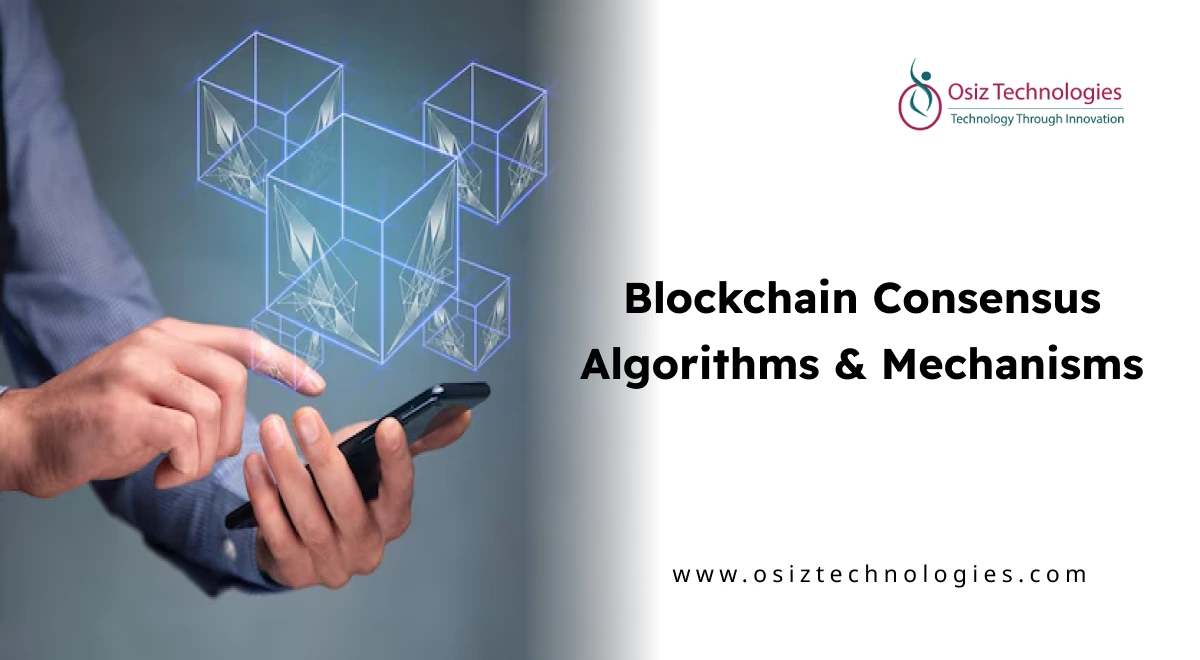Consensus algorithms make blockchains secure by ensuring all participants agree on the same data without needing trust.
Blockchain Consensus: Why It Matters
Blockchain Consensus is the method by which computers on a network confirm transactions and maintain a shared record. It gets rid of the need for a central controller, which lets users trust the system.
This matters as it cuts down on fraud, prevents double-spending, and keeps data safe from changes. By making sure everyone sticks to the rules, the agreement ensures networks are correct, clear, and dependable.
How Blockchain Consensus Mechanisms Work
Blockchain consensus mechanism lets those on the network check transactions before they're saved. Each person sees what the transaction involves, and if most approve, it's confirmed, and a fresh block is added.
These methods keep all blockchain copies in sync, guarding against fraud and data issues. Different ways, such as Proof of Work and Proof of Stake, use varied rules to select who checks and adds the next block. The aim is to keep a safe and sure record.
Transaction Proposal
Someone who wants to send crypto makes a transaction and puts it out on the blockchain network. Every node gets the request and gets ready to check it.
Transaction Validation
Each node checks the transaction details. They make sure the digital signatures are right, the account balances are good, and that the transaction follows all the blockchain's rules.
Consensus Agreement
Nodes use a method (like Proof of Work or Proof of Stake) to agree on which transactions are okay to add to the next block.
Block Confirmation
Once they agree, the approved block is added to the blockchain. All nodes update their copies to keep everything in sync. This keeps the ledger secure from changes.
Types of Consensus Mechanisms and Popular Blockchain Examples
Proof of Work (PoW)
With PoW, miners solve tough math problems to confirm transactions and add blocks to the blockchain. It’s very secure and has a track record of dependability. The downsides are that it uses a lot of energy and is slow.
Proof of Stake (PoS)
Here, validators lock up tokens to propose and confirm blocks. It saves energy and is quicker than PoW. But those with more tokens can have more control.
Delegated Proof of Stake (DPoS)
Token holders vote for a few validators to create and confirm blocks. It scales well and keeps costs down, it’s a bit more centralized than PoS.
Practical Byzantine Fault Tolerance (PBFT)
Nodes share messages and agree by majority vote. This ensures fast finality and good security. It’s best for private networks since it can have some communication problems on big, public blockchains.
Proof of Authority (PoA)
A small group of trusted authorities validates blocks. It’s fast and gets the job done. While it’s good for business, it’s more centralized because it uses fewer validators.
Examples
Proof of Work (PoW): Coins like Bitcoin and Litecoin approve things this way. People mine by solving problems to say a transaction is valid. It takes a little bit, but it's safe.
Proof of Stake (PoS): Ethereum and Cardano go with this. People put up some coins to say transactions are good. It's quicker and uses less power than mining.
Delegated Proof of Stake (DPoS): Coins like EOS and TRON let people vote for a few folks to check transactions. This makes things fast and cheap.
Practical Byzantine Fault Tolerance (PBFT): Hyperledger Fabric and Ripple use this. Computers vote to agree on transactions. It's good for private setups where speed and trust are important.
Proof of Authority (PoA): VeChain and Binance Smart Chain do this. Only certain people can approve new blocks. It's good for companies that want things done fast.
Emerging Trends: AI-Driven & Hybrid Consensus Models
Blockchain is moving past old-fashioned agreement systems, with AI and hybrid models leading the way.
AI-Driven Agreements: AI is being added to pick the node, guess when the network is busy, and spot bad actions. By seeing trends as they happen, AI can make agreements quicker, smarter, and use less power.
Hybrid Consensus Models: Lots of fresh blockchains are using a mix of ways to agree, like PoW + PoS or PoS + PBFT. This way balances safety, growth, and quickness, which fits well for hard uses like DeFi, supply lines, and business fixes.
Choosing the Right Consensus Mechanism for Blockchain Projects
Public & Highly Decentralized Projects
When it comes to open, community-run projects, Proof of Work (PoW) and Proof of Stake (PoS) are solid options. They keep your transactions secure in the crypto, DeFi, and NFT space.
High-Speed, User-Focused Applications
If you're after quick and simple apps, think about Delegated Proof of Stake (DPoS). It lets users pick validators, so transactions are fast and cheap. It's for dApps, games, social media, and fun platforms.
Private or Enterprise Blockchain Solutions
Private or Enterprise Blockchain Solutions, give Proof of Authority (PoA) and Practical Byzantine Fault Tolerance (PBFT) a look. They use fewer validators, which makes things speedy and efficient. Suitable for supply chains, banks, hospitals, and even the power sector.
Conclusion: The Road Ahead for Blockchain Consensus
Consensus methods are important for blockchain security, speed, and growth. Right now, Proof of Work and Proof of Stake are the big players. Soon, AI and hybrid setups could help blockchains run quicker, be more eco-friendly, and safer.
As more sectors such as finance and healthcare, start using blockchain, picking the correct consensus approach matters a lot for application performance. Partnering with a solid blockchain development company can assist businesses in spotting the best setup for their aims.
The trend seems to point toward smart, hybrid consensus systems. This could boost blockchain adoption and spark fresh decentralized answers.
Listen To The Article
Recent Blogs

X-Mas 30%
Offer











